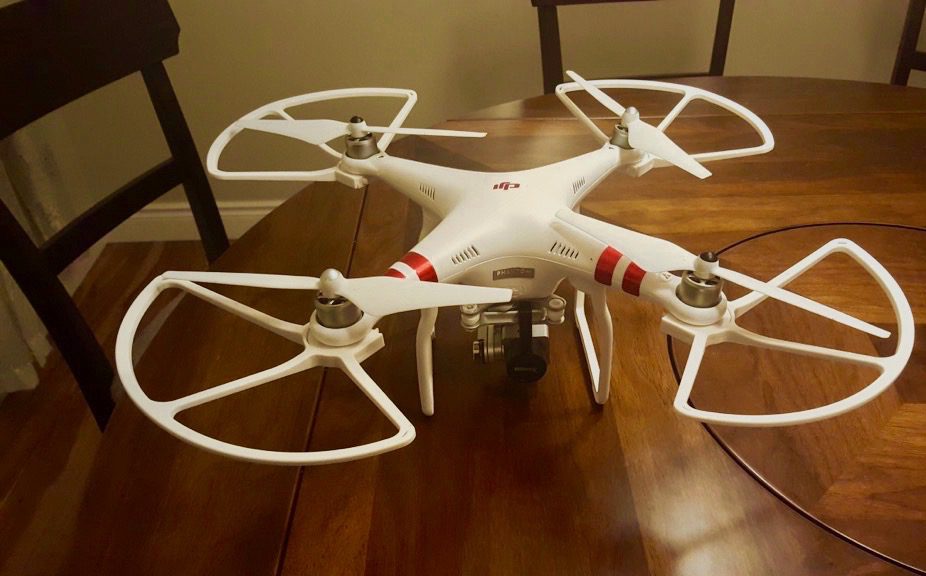Beginning this June, new rules for drone flyers will come into effect across Canada. The regulations introduce new licensing requirements and reinforce strict limitations on what GTA airspace is open to drones.
An unmanned aerial vehicle (UAV), or drone, is a remote controlled flying vehicle used for professional and recreational purposes. In the last few years, sightings of drones at airports around the world have caused massive flight delays and risks. One of the biggest disruptions occurred in December, when Britain’s Gatwick Airport was shut down and nearly 1,000 flights were cancelled or changed following drone sightings near the airport.
In 2017, a Skyjet plane was struck by a drone as it approached Quebec City’s Jean Lesage Airport.
Transport Canada looks to avoid this happening again by limiting the airspace allowed for UAV flights and categorizing flying as either basic or advanced operations.
“The new drone regulations, which will come into force on June 1, 2019, introduce two main categories of drone operations of basic and advanced,” said Sau Sau Liu, a spokesperson with Transport Canada, in an email. “Each one has a different set of rules drone pilots must follow,” Liu said.
“All pilots of drones with a maximum takeoff weight of at least 250 grams and less than or equal to 25 kilograms will need to pass an online exam, get a drone pilot certificate and register their drone(s),” said Liu.
Recreational drone pilots who fly outside of controlled airspace and away from bystanders will need to obtain what’s called a “basic operations” pilot certificate.
“Pilots wanting to fly advanced operations will also need to pass a flight review,” Liu said.
To identify what sort of drone pilot one is and the rules and licensing they need, Transport Canada has published guidelines on their website.
“The new laws aren’t much different than what has been practised by responsible drone pilots for years,” said Bobby Bonner, a Toronto based drone owner. “My interest [in the hobby] died because Toronto is a no-fly zone technically,” Bonner continued.
Under the current rules, drones cannot be flown within 5.6 kilometres of airports and 1.9 kilometres of heliports, leaving few spaces in Toronto open to recreational pilots. These restrictions will remain in place under the new regulations.
The current drone airspace restrictions have been mapped out by the National Research Council of Canada. Flyers are able to see where drone flight is permitted and prohibited for basic recreational purposes within all of Canada.
“The National Research Council of Canada developed its UAV site selection tool to provide visual information to the public as to where they can or cannot fly drones under the different categories (i.e. recreational and non-recreational),” said spokesperson Nic Defalco.
The NRC worked closely with Transport Canada to develop their UAV site selection tool. It was last updated about a year ago.
“The NRC is working with Transport Canada on developing an improved web-based tool that reflects the new regulations that are coming into force in June 2019,” Defalco said.

The National Research Council of Canada’s UAV Site Selection Tool map shows prohibited airspace over the GTA (Screenshot of NRC Site Selection Tool)
The map shows that much of Toronto is a no-fly zone for those who plan to fly recreationally within the GTA with a basic UAV certificate. This won’t be the case, necessarily, for those with an advanced operations pilot certificate.
“Drone pilots who need to fly in controlled airspace such as the Greater Toronto Area or near or over bystanders will need to obtain a pilot certificate – advanced operations, and follow the rules that apply,” said Liu. They include:
- You must be able to show your advanced operations pilot certificate and proof of registration
- You must fly your drone below 122 metres (400 feet) above ground level.
- You must always yield to conventional aviation.
- If you want to fly in restricted airspace, you must seek permission from Nav Canada, the not-for-profit company that provides air traffic control across Canada
- You must fly within the operational limits of your drone by following the manufacturer’s instructions.
Getting permission from Nav Canada to fly in controlled airspace has been the biggest obstacle for Half Brother Productions, a digital media production company based in the GTA.
“Flying in the GTA has become more difficult as Toronto and Ontario have begun to streamline laws prohibiting drone pilots like myself from flying near buildings,” said Christian Wallace, a camera and drone operator with Half Brother Productions.
The approval process Wallace has to undertake for his business to fly in Toronto has forced him to relocate outside of the city. The company will choose to create video and photographic content with drones elsewhere if Toronto isn’t a necessity for their projects, he said.
“I think Toronto is a terrible place to be a drone pilot because of the several airports, one of which is directly in the downtown core, making it illegal to fly anywhere near them,” Wallace said. “I would recommend flying in Scarborough as long as one can make sure they are outside the restricted flying zones.”
Between now and June 1, the existing rules for drones are in place. They include specific limits to how close you can fly a drone to vehicles, people, natural hazards and disaster areas. The full list of the rules is available on Transport Canada’s website.

